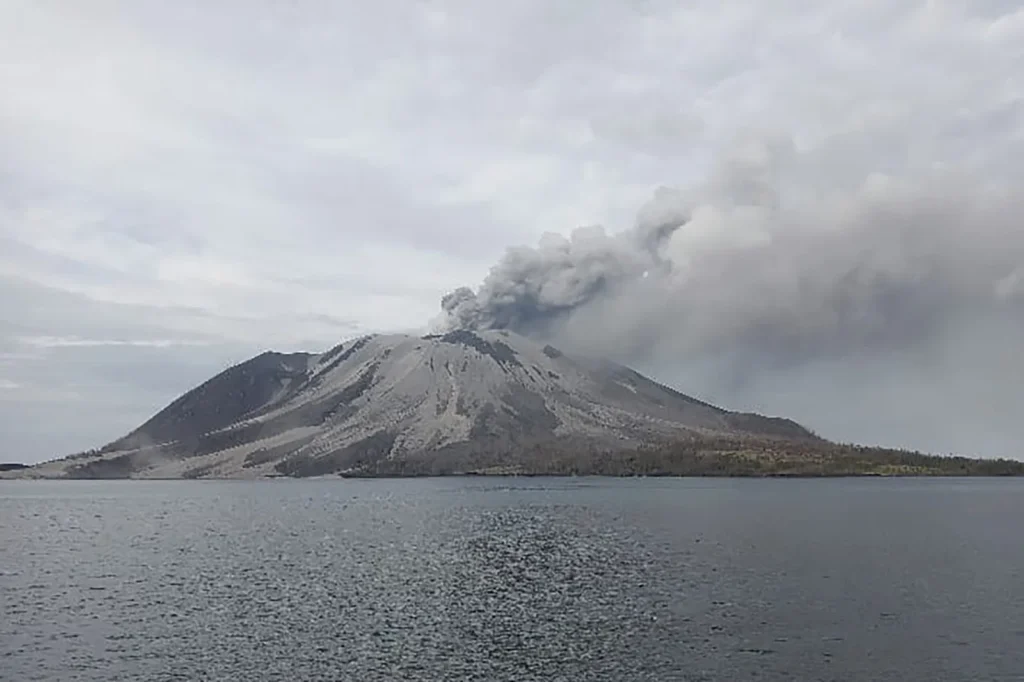When Paradise Meets Turbulence: How the Mount Lewotobi Eruption Disrupted Bali’s Tourism
Imagine you’re basking in Bali’s legendary golden sands, the scent of frangipani in the air—and suddenly, flight alerts pop up on your phone. Your smooth island getaway turns chaotic as Mount Lewotobi Laki‑Laki on nearby Flores erupts and sends a towering ash plume 10 km into the sky. Air India, Jetstar, Singapore’s Tigerair and others cancel or delay flights. And your dream trip? It’s on hold—again.
This isn’t the first time. When the same volcano erupted in November, killing nine people and necessitating widespread evacuations, Bali’s skies held performers out. As another round of disruption hits, travelers and tourism stakeholders are on edge. How did events unfold, what’s being done now—and what should you do if you’re impacted?
Understanding the Latest Eruption and Its Impact
What Happened—and Why It Matters
On June 17, 2025, Mount Lewotobi Laki‑Laki erupted, triggering a volcanic ash cloud over 10 km high—high enough to endanger aircraft. Indonesia’s disaster agency immediately raised the alert to “highest level of four,” mandating flight restrictions. Swiftly, airlines from Australia, China, India and Southeast Asia halted passenger and even cargo flights in and out of Bali’s Ngurah Rai International Airport.
How Airlines Reacted
- Air India (Delhi–Bali flight AI2145) turned back mid-flight, prioritizing safety. The airline issued apologies, arranged hotel stays, reschedules or refunds for affected travelers.
- Jetstar announced cancellations and delays, projecting operations to resume later once ash cleared.
- Airlines like Air New Zealand, Tigerair Singapore, Juneyao (China), and numerous Indonesian carriers including AirAsia, Garuda Indonesia, Batik Air, Wings Air, AirAsia X and Singapore Airlines were hit. Roughly 30 flights were scrapped on June 18, according to Bali airport info.
What the Airport Is Doing
Ngurah Rai Airport remains operational—but activities depend on ash dispersal and individual airline decisions. Ground handling, terminal services and check-ins continue, although routes touching the ash-contaminated airspace are paused.
Local Impact: Evacuations & Safety Measures
Communities near the volcano were hit by ash fall late on June 17, prompting evacuation of nearby villages. The Indonesian Geological Agency has cautioned residents and tourists to keep 7 km away from the crater and warned of the possibility of lahars (volcanic mudflows) in the case of heavy rains, even though no fatalities or major infrastructure damage have been reported as of yet.
Why This Matters: Bali’s Economy and Pandemic Recovery
Tourism’s Central Role
Tourism represents a massive share of Bali’s GDP—around 40%. Flight disruptions affect every link: airlines, hotels, drivers, restaurants and activity providers. Each canceled flight carries immediate financial consequences and impacts traveler confidence just as the island rebounds from the pandemic slowdown.
The Ring of Fire Reality
Indonesia’s place on the volatile Pacific Ring of Fire makes it one of the world’s most active hotspots for seismic tremors and volcanic outbursts. This eruption serves as a sobering reminder of the dangers posed by nature, emphasizing the necessity of emergency plans and resilient travel.

What Travelers Should Do Now
- Stay Informed & Flexible: Follow official alerts from Indonesia’s Geological Agency, Bali airport, and your airline. Flight tracking apps (e.g. FlightAware, FlightRadar24) can help you monitor updates minute-by-minute.
- Understand Airline Policies: Most carriers allow free rebooking or refunds in these circumstances—but exceptions may apply. Contact customer service, or use mobile apps to modify flights immediately and avoid refunds turning into vouchers.
- Plan for Delays: If you’re already in Bali or Flores:
- Plan accommodations: Hotels may fill fast as evicted travelers stay longer. Book asap.
- Stay 7 km away from the volcano.
- Wear masks or avail airport-provided ones to avoid ash inhalation.
- Stay updated on weather, since rain could trigger mudflows.
- Insurance and Backup Plans: Check your travel insurance policy—it may cover cancellations due to volcanoes or “force majeure.” Document everything: notifications, photos of ash, correspondence with airlines. This helps with claims.
Lessons in Crisis Travel Planning
- Avoid last‑minute bookings during volcanic alerts.
- Monitor authoritative sources—e.g., National Disaster Mitigation Authority (BNPB) and Volcano Observatory Notices for Aviation (VONA).
- Pack smart: Masks, goggles, dustproof covers, and an offline survival kit (phone powerbank, water).
- Keep copies of travel documents electronically and offline—essential if airport services are disrupted.
Airlines Ramp Up Safety Measures
- Advanced ash trackers: Current ash plume dispersion models are provided by Astrovol, NOAA, and ICAO.
- Pilot protocols: Airlines are revising pre-flight ash awareness training and cockpit checks.
- Airport readiness: Bali and regional airports upgrade runway-cleaning methods and implement elastic scheduling to manage sudden cancellations.
The Human Element: Traveler Stories & Local Resilience
A family from Melbourne says: “We were 20 minutes from boarding when Jetstar delayed us. The hotel booked us in, but our kids were disappointed.”
A Balinese tour operator reflects, “Last‑minute cancellations cost us a day of bookings and meals already prepared for guests.”
Yet local communities are supporting evacuated villagers, distributing masks, food and shelter.
Conclusion: Staying Safe While Keeping Dreams Alive
Mount Lewotobi’s eruption on June 17, 2025, is a potent reminder that travel to paradise can suddenly collide with nature’s fury. But with responsible planning—monitoring alerts, leveraging insurance policies, and preparing proactive backups—your Bali adventure can survive volcanic surprises.
Embrace this story as more than a warning—it’s an opportunity to travel smarter, with resilience and humanity.


